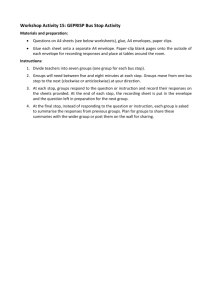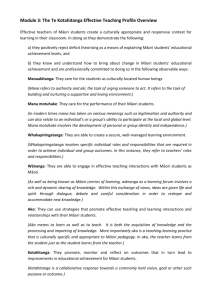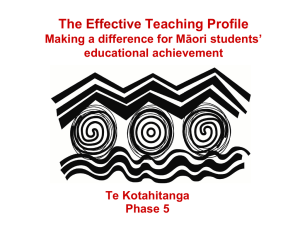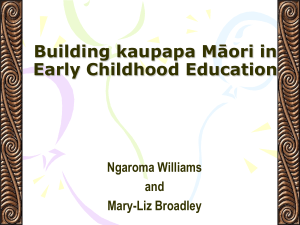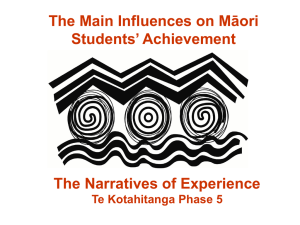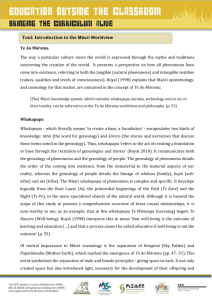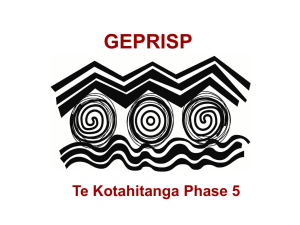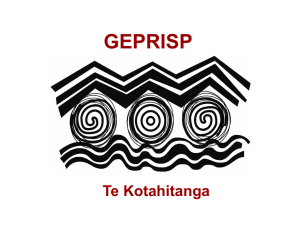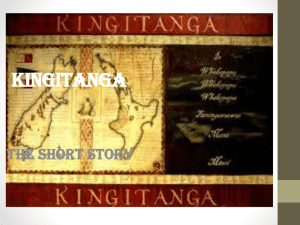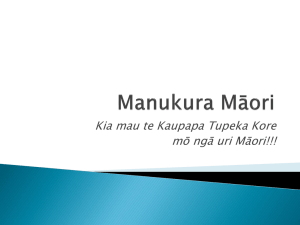1 Introduction to Te Kotahitanga
advertisement
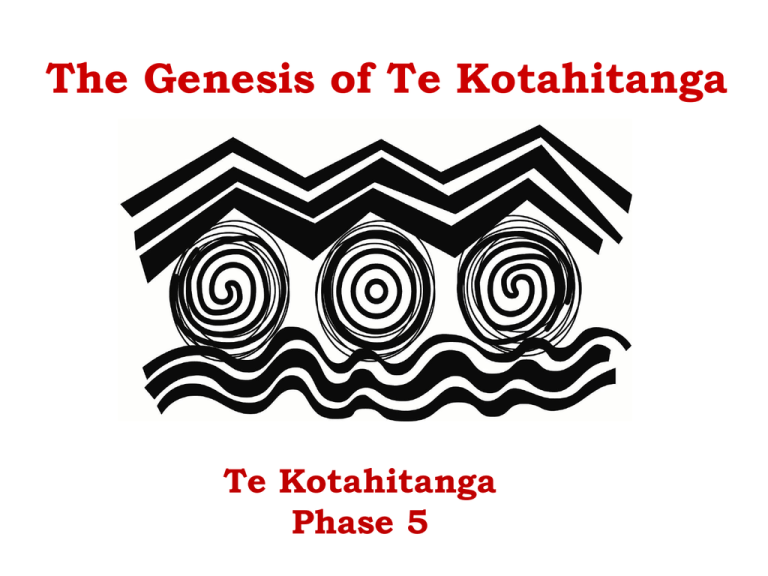
The Genesis of Te Kotahitanga Te Kotahitanga Phase 5 2001: The Scoping Exercise Research initiated by: • Professor Russell Bishop (Māori Education Research Institute, University of Waikato) • Mere Berryman (MOE SE Poutama Pounamu Research and Development Centre, Tauranga) 2001: The Scoping Exercise Researchers sought to understand more about what was behind the ongoing discrepancies in Māori students’ educational achievement compared with their non-Māori peers. 2001: The Scoping Exercise In order to do so they: • interviewed a selection of Māori students and some of their educators from a range of secondary schools using a Kaupapa Māori research approach • examined national and international literature Findings of The Scoping Exercise Participants could clearly theorise their education experiences. There was a clear mismatch between the descriptions and explanations of the students and their teachers. Findings of The Scoping Exercise Teacher student relationships and interactions, together with structural issues, impeded and limited the progress of Māori students. Findings clearly revealed the value of a Kaupapa Māori research approach for identifying and talking about solutions. Te Kotahitanga Phase I 2001 – 2002 Researchers sought to: • understand more about what was behind the ongoing discrepancies in Māori students’ educational achievement compared with their non-Māori peers • identify how to raise Māori student achievement Te Kotahitanga Phase I Research in 5 secondary schools by talking with: • Year 9 and 10 Māori students (engaged and non-engaged) • Their whānau • Principals • Teachers 2001 - 2002: Te Kotahitanga Phase 1 • Each group provided rich narratives of experience from which the basis for the Te Kotahitanga professional development intervention emerged. • The intervention worked well for Māori students with a few trained teachers in these schools, but traditional relationships and interactions outside of these contexts and within the wider school proved to be counterproductive. 2002 - 2003: Te Kotahitanga Phase 2 • Te Kotahitanga Phase 2 trained more of the teachers in 3 schools in order to maximise the effects of the intervention across each school. • The intervention worked well for many of the trained teachers, and learning opportunities for Māori students in these settings undoubtedly improved. 2002 - 2003: Te Kotahitanga Phase 2 • The collection and use of evidence of student learning outcomes to monitor and inform new learning was less commonly applied. • Professional communities, rather than professional learning communities emerged. 2003 - 2009: Te Kotahitanga Phase 3 • In-school facilitators in 12 schools were trained to work with cohorts of teachers to implement the professional development cycle in their schools. • Teachers were trained by in-school facilitators. • Greater emphasis on the effective use of student learning outcomes to monitor and inform new learning. 2003 - 2009: Te Kotahitanga Phase 3 • Review of Practice and Development in observations, feedback and co-construction for both formative and summative purposes. • GPILSEO: Sustainable school wide implementation 2006 – 2009: Te Kotahitanga Phase 4 Facilitation teams from 21 new schools began training in October 2006. Since 2006 ongoing professional development for facilitation teams through: •Out-of school face to face PD hui •In-school face to face Review of Practice and Development visits in 2008 and 2009 •Distance support through online community and 0800 number University of Waikato Māori Māori students Non-Māori Ministry of Education
